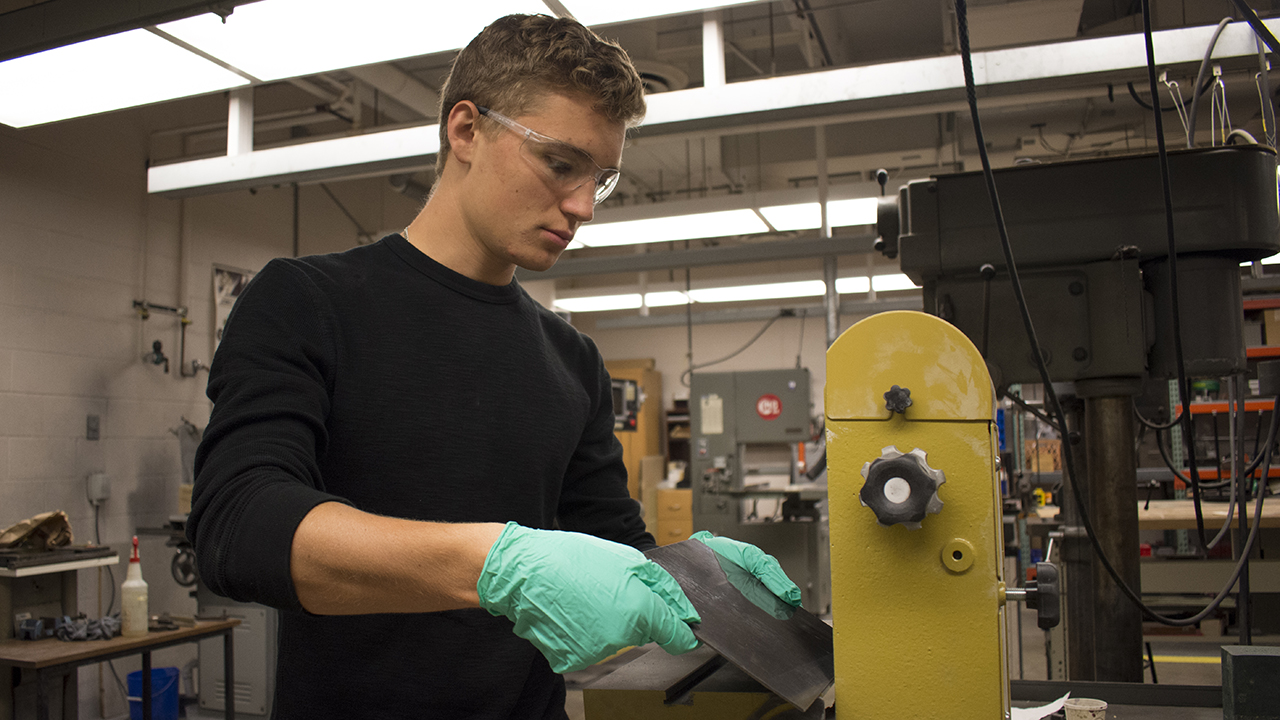If you want to make things, break things, and figure out how to improve them, you could turn that drive into a career as a composites engineer.
I became a professor of Composite Materials Engineering because it’s still a relatively new field and there are so many ways to branch out within it. You aren’t limited in what you can do and research, so anything is possible.
Composite engineers are the ones who make products better. They make heavy things lighter and inefficient designs more efficient. They make life easier and, in a way, improve our world—and now I get to watch students do just that.
Let me tell you more about WSU’s Composite Materials Engineering (CME) program.
- We’re the only ABET-accredited CME undergrad program in the U.S.
- Our students graduate ready to take the Fundamentals of Engineering (FE) exam through NCEES to become professional engineers.
- You’ll get plenty of hands-on opportunities inside the classroom using expensive equipment usually reserved for graduate-level settings, like our Scanning Electron Microscope (SEM), Drop Tower Impact Tester, and Hydraulic Load Frame.
- You’ll also work with classmates on a variety of projects like creating Rat Trap Race Cars, small-scale bridges, catapults, capstone designs, and more.

Eric Kerr-Anderson, Ph.D.
I think I can effect more change in the world by inspiring students to go after what drives them than what I can do alone.

Why I'm Passionate about This Field
It all started with one of my professors when I was a mechanical engineering undergrad.
I was interested in research, and he took me on as one of his research students. That same professor later taught a class where he told us that the field was wide open for research. I really liked the fact that I didn’t have to pigeon-hole myself into something super specific.
When designing anything in engineering, you generally design either with a load in mind—meaning you select a material that can withstand a desired amount of weight or pressure—or with a material in mind—meaning you figure out how much of that material you need for it to not break.
For Composite Materials Engineering, there’s an added layer to this way of thinking, which is you can build the material you want from the ground up and engineer it to withstand a desired load. I found this fascinating.
I could make something, break it, analyze the data, and that’s a thesis.
I thought it would be cool to join the field when it was relatively new and fill in some of the knowledge gaps in research.
I was always told by others that I had a knack for explaining concepts that get through to people, regardless of their educational level, so becoming a professor seemed very natural for me. Before returning to teach, though, I knew I wanted to go off into the industry to gain experience after my doctorate.
My interest in Composite Materials Engineering ultimately came down to my professors who had industry experience and were more knowledgeable about the real-world ramifications of what we were learning—and I wanted to give all that back to my future students.

I could talk about how great our program is all day, but don’t just take my word for it.
Hear from one of our alumni who’s now the owner of two startup businesses and one of our current students who’s already showing promise of becoming an even greater engineer than I could imagine for myself.
Alumni Shoutout: Sethu Munusamy
The Composite Materials Engineering program at WSU has such a local legend vibe.
When I went on to pursue my master’s degree at a different university, the students there—even ones working on their Ph.D.—saw me as an expert and would ask for help.
There’s a reputation for a WSU undergraduate student. In the composites industry, we’re almost looked at the same breath as a Harvard or Stanford student.
My WSU degree has been instrumental to becoming the successful professional that I am today.
Learn more about Sethu’s entrepreneurial journey in the field of Composite Materials Engineering.
Student Shoutout: Sara Johnson
The Composite Materials Engineering program has given me ample opportunity to gain real experience using industry equipment and techniques.
When I arrived at my internship with North Dakota State University last summer, they were very impressed that I already knew how to operate their mechanical and thermal testing equipment.
I’ve never been given anything but equal treatment by my classmates and professors at WSU.
The thing I admire most about Dr. Kerr-Anderson is his genuine interest in seeing us succeed—you can tell that he really enjoys teaching and is excited to help others learn.
The Professor Pop-Up blog series explores WSU’s academic programs through the eyes of talented professors, ambitious current students, and thriving alumni. Read more stories from the Professor Pop-Up series.